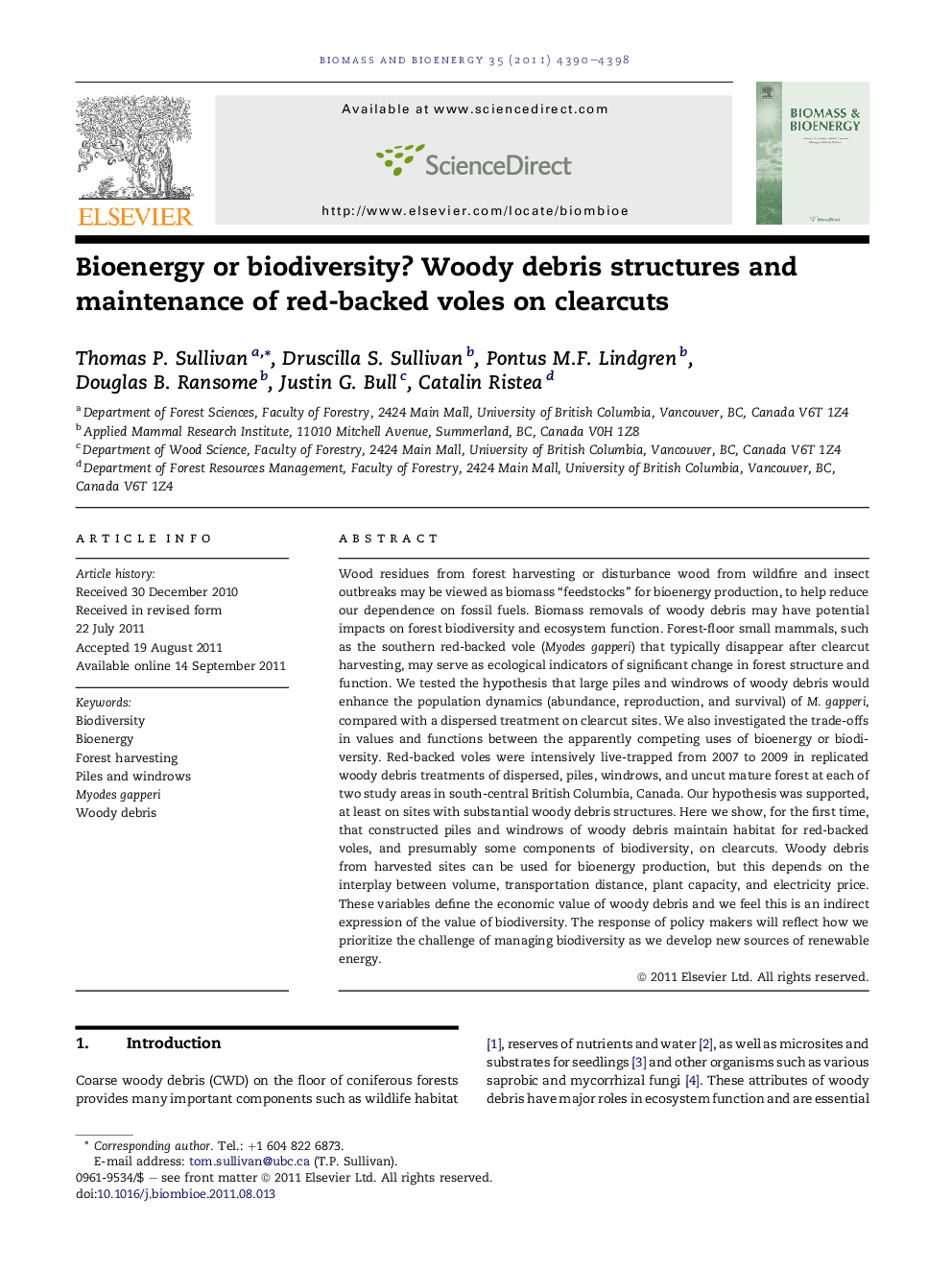| کد مقاله | کد نشریه | سال انتشار | مقاله انگلیسی | نسخه تمام متن |
|---|---|---|---|---|
| 677986 | 888627 | 2011 | 9 صفحه PDF | دانلود رایگان |

Wood residues from forest harvesting or disturbance wood from wildfire and insect outbreaks may be viewed as biomass “feedstocks” for bioenergy production, to help reduce our dependence on fossil fuels. Biomass removals of woody debris may have potential impacts on forest biodiversity and ecosystem function. Forest-floor small mammals, such as the southern red-backed vole (Myodes gapperi) that typically disappear after clearcut harvesting, may serve as ecological indicators of significant change in forest structure and function. We tested the hypothesis that large piles and windrows of woody debris would enhance the population dynamics (abundance, reproduction, and survival) of M. gapperi, compared with a dispersed treatment on clearcut sites. We also investigated the trade-offs in values and functions between the apparently competing uses of bioenergy or biodiversity. Red-backed voles were intensively live-trapped from 2007 to 2009 in replicated woody debris treatments of dispersed, piles, windrows, and uncut mature forest at each of two study areas in south-central British Columbia, Canada. Our hypothesis was supported, at least on sites with substantial woody debris structures. Here we show, for the first time, that constructed piles and windrows of woody debris maintain habitat for red-backed voles, and presumably some components of biodiversity, on clearcuts. Woody debris from harvested sites can be used for bioenergy production, but this depends on the interplay between volume, transportation distance, plant capacity, and electricity price. These variables define the economic value of woody debris and we feel this is an indirect expression of the value of biodiversity. The response of policy makers will reflect how we prioritize the challenge of managing biodiversity as we develop new sources of renewable energy.
► First analysis of woody debris (piles and windrows) as habitat structures for wildlife and biodiversity on clearcuts.
► Piles and windrows of woody debris maintain habitat for red-backed voles and some components of biodiversity on clearcuts.
► Woody debris-bioenergy production may depend on volume, transportation distance, plant capacity, and electricity price.
► These variables define the economic value of woody debris as an indirect expression of the value of biodiversity.
Journal: Biomass and Bioenergy - Volume 35, Issue 10, 15 October 2011, Pages 4390–4398